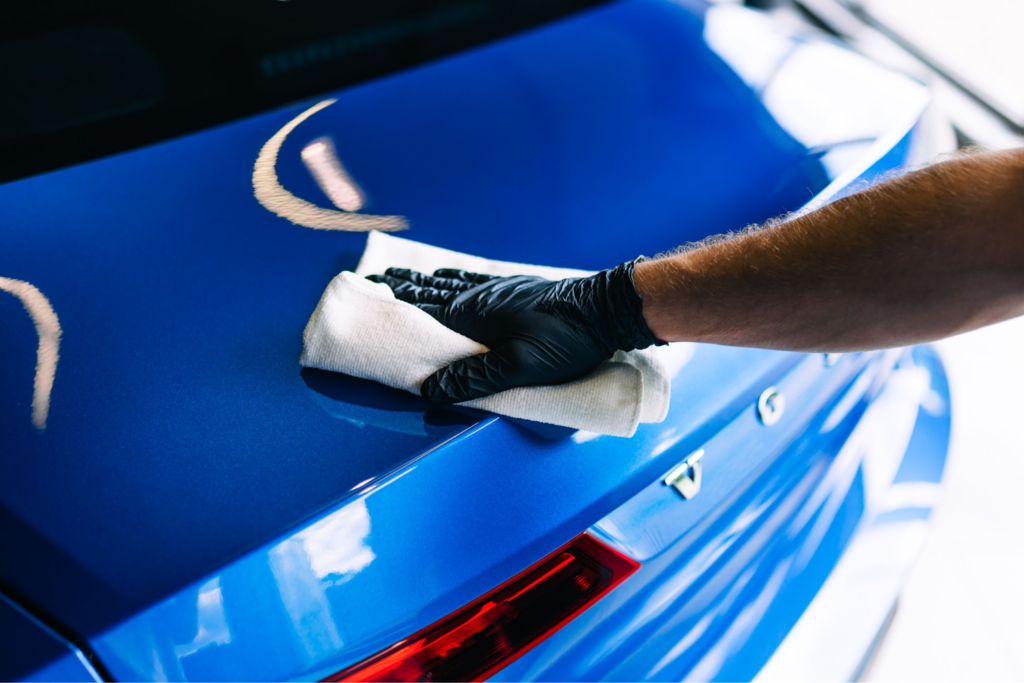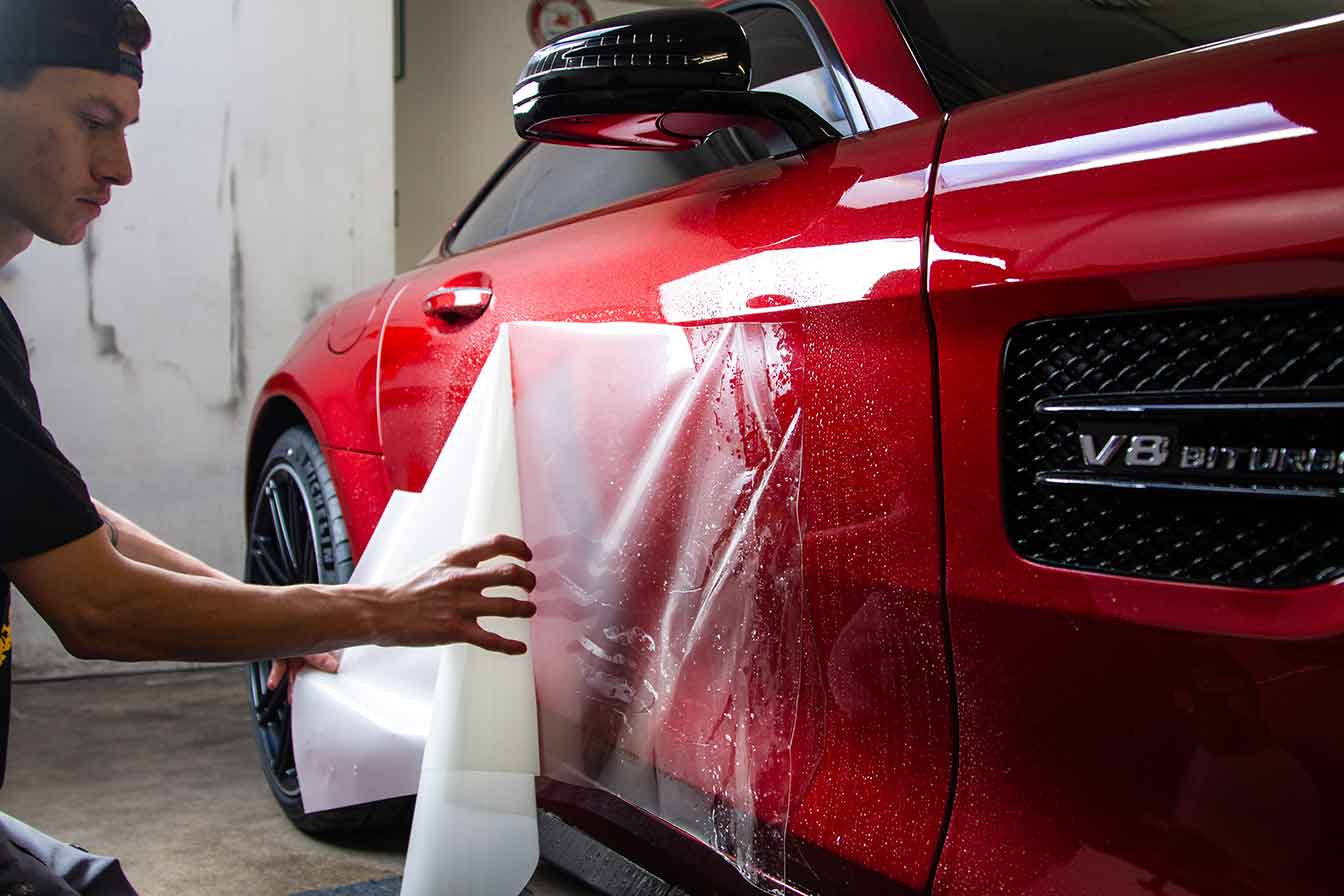The Significance of Ceramic Coating: Safeguarding Your Vehicle's Exterior With Precision
In an era where keeping the aesthetic and practical integrity of your lorry is critical, ceramic layer arises as a pivotal option. With its distinct bonding buildings, ceramic finish offers a degree of protection that much surpasses traditional waxing methods.
Benefits of Ceramic Coating
When it comes to protecting an automobile's visual charm, ceramic coating supplies considerable advantages. This innovative safety layer offers a long lasting shield against environmental contaminants, including dust, crud, and damaging UV rays. By creating a semi-permanent bond with the lorry's paint, ceramic finishes properly protect against oxidation and fading, ensuring that the cars and truck preserves a shiny, showroom-like coating for a prolonged duration. This not only boosts the automobile's aesthetic appeal however also adds to its long-term value.
In addition to its protective top qualities, ceramic finishing supplies remarkable hydrophobic residential properties, creating water and other liquids to grain off easily. This attribute streamlines the cleaning procedure, as dust and debris are less likely to comply with the surface area, minimizing the regularity and initiative required for upkeep. In addition, the finish's resistance to chemical spots from acidic impurities like bird droppings and tree sap is another noteworthy advantage, reducing prospective paint damage.
Ceramic coatings likewise enhance scratch resistance, giving a layer that can absorb small abrasions and swirl marks. This feature is specifically valuable in maintaining an excellent surface, minimizing the likelihood of visible blemishes and protecting the honesty of the vehicle's paintwork in time.

Just How Ceramic Layer Works
Understanding the auto mechanics behind ceramic finishing exposes its efficacy as a safety solution for lorries. Ceramic coverings are basically fluid polymer applications that chemically bond with a vehicle's factory paint, producing a safety layer. This layer works as a barrier versus ecological pollutants such as grime, dirt, and ultraviolet rays, which can degrade an auto's exterior in time. The vital part in ceramic covering is silicon dioxide (SiO2), which stems from quartz crystals and is recognized for its exceptional firmness and sturdiness.
Application of ceramic finishing entails a careful procedure. The vehicle's surface area must be completely cleaned up and decontaminated to make sure optimal adhesion. Once used, the liquid polymer develops a semi-permanent bond with the paint, hardening right into a transparent, durable shield. This shield enhances the vehicle's gloss and hydrophobic residential properties, promoting easier cleansing by causing water and contaminants to bead and slide off easily.
Additionally, the finishing's molecular framework supplies resistance to minor scrapes and chemical stains. Unlike waxes or sealants that rest on top of the paint, ceramic finishings integrate with the surface area, using long-lasting security. This assimilation is fundamental to its effectiveness, making certain the car's coating remains pristine for years.
Contrasting Ceramic Coating to Alternatives
In the realm of automobile protection, ceramic finishing stands as an awesome choice when contrasted to traditional options such as waxes and sealers. While waxes provide a short-term glossy coating, commonly lasting just a couple of weeks to months, ceramic layers offer a longer-lasting service, often withstanding for many years. This sturdiness is attributed to the chemical bonding that takes place when ceramic finishings are used, forming a solid layer that is immune to ecological risks.
Contrastingly, sealants, although even more resilient than waxes, still fall brief of the durable security offered by ceramic layers. Sealants can usually last for as much as a year, offering a synthetic shield against certain elements. Nevertheless, they do not have the exceptional hydrophobic residential or commercial properties and UV security that ceramic finishes supply.
In addition, ceramic coatings supply improved scrape resistance, which neither waxes neither sealants can successfully match. In recap, while standard waxes and sealers use basic defense, ceramic finishings present an extensive, lasting solution that dramatically boosts and preserves the automobile's exterior finish.
Application Process Explained
Applying ceramic covering to an automobile calls for a check out here meticulous procedure to make certain optimum results and toughness. The initial action includes thoroughly cleaning the automobile's surface area to remove dirt, oil, and previous waxes. This is crucial for making sure the finish adheres effectively. A pH-neutral shampoo and a clay bar treatment are commonly made use of to attain a pristine surface. Once cleansed, the car is dried and polished to remove any blemishes, as any existing swirls or scratches can come to be a lot more pronounced after the layer is applied.
Adhering to surface area prep work, the application of the ceramic coating begins. Making use of an applicator pad, the ceramic covering is applied in little areas to ensure even insurance coverage.
After application, the coating needs a details treating duration, during which the car should be secured from water and contaminants. This treating procedure can vary depending on the item but normally ranges from 24 to 2 days. Eventually, this detailed process is critical in accomplishing a resistant and shiny surface.
Maintenance Tips for Durability
To maintain the longevity of a ceramic finish, adherence to a regimented maintenance regimen is essential. Prevent automatic vehicle cleans, as their severe brushes can compromise the finish's integrity.
Post-wash, drying out the vehicle with a tidy microfiber towel stops water places that might degrade the layer over time. In addition, apply a ceramic coating booster every few months. These boosters reinforce the hydrophobic buildings and improve the finish's safety capacities, ensuring it remains efficient versus contaminants.
Remember that vehicle parking locations play a vital duty in maintenance. ceramic coating. Whenever feasible, park in shaded areas to decrease UV direct exposure, which can gradually compromise the layer. For long-term storage space, consider utilizing a vehicle cover for included protection against ecological components
Final Thought
In conclusion, ceramic covering functions as an essential protective layer for lorry exteriors, providing durable defense against ecological factors such as dust, uv, and pop over to this site crud rays. By creating a semi-permanent bond with the paint, it improves aesthetic allure while protecting the automobile's worth. Its hydrophobic buildings promote easier upkeep, identifying it from different protective techniques. Understanding the application process and adhering to upkeep referrals are necessary for taking full advantage of the long life and efficiency of ceramic covering.
When see here it comes to preserving a car's visual charm, ceramic coating supplies substantial advantages. By creating a semi-permanent bond with the lorry's paint, ceramic layers efficiently stop oxidation and fading, guaranteeing that the car maintains a shiny, showroom-like surface for an extended period. Ceramic coverings are basically fluid polymer applications that chemically bond with a cars and truck's factory paint, producing a protective layer. In recap, while traditional waxes and sealants provide standard protection, ceramic finishes offer a comprehensive, long-lasting remedy that dramatically improves and protects the vehicle's exterior coating.
